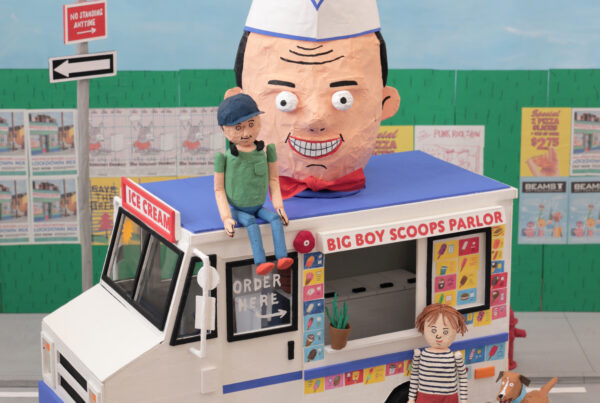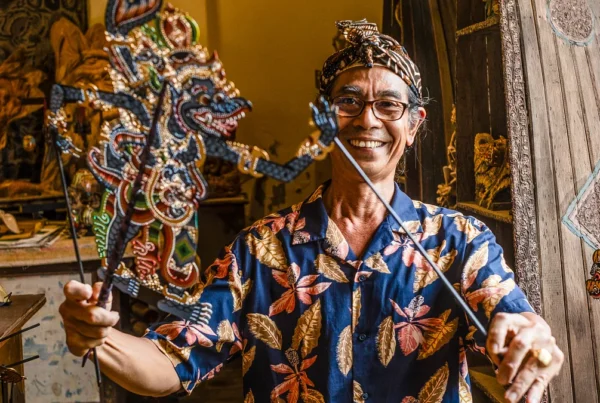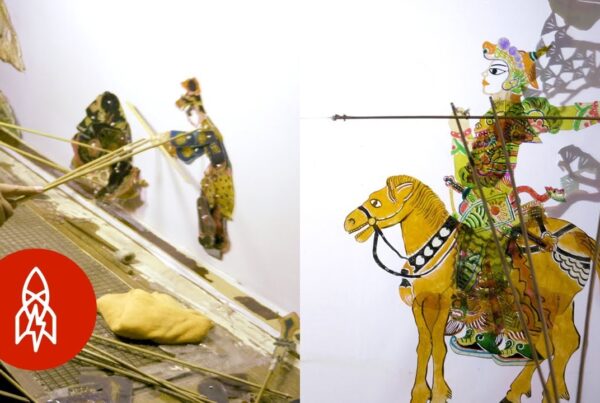This is an interview with Amari Yōichirō, one of the few remaining traditional puppet makers in Japan. In it, he discusses his craft and demonstrates examples of the puppet heads that he carves at his studio in Tokushima, on Japan’s Shikoku Island.
Yōichirō-san creates puppet heads for Awa ningyō jōruri puppet theatre, a local form of Bunraku that dates back to the the Edo period (1603-1868), when it was especially popular in the Tokushima countryside. At the height of their popularity, the Awa performances enthralled audiences, using music and elaborate puppets to tell tales of legends, love, loyalty and honour across stages in 300 local villages.
Awa puppet heads are expensive, costing up to ¥1,000,000 (approximately $6,750 USD) and take about one month to produce. Although they look similar to the puppets of the more well known Osaka-style Bunraku, Awa puppets are different, in part because of the demands of performing on all those village stages:
The heads for Awa jōruri puppets are larger than those for bunraku. As Amari explains, “Because the Awa dolls were used for performances on village stages from evening into the night, it was dark and difficult to see them in the light from oil lamps and candles. The best solution was to make the heads bigger so that they could be seen from a distance.” Bunraku heads are made from hinoki cypress, but the larger Awa heads need to use a lighter material and are made from paulownia.
Source: nippon.com
If you ever have the opportunity to visit Shikoku, one of the best places to see Yōichirō-san’s puppets for yourself is at the Tokushima Puppet Theater & Museum, where traditional artists are helping to preserve this rich tradition for future generations.
Special thanks to Conrad Hartz for discovering and sharing this video!



